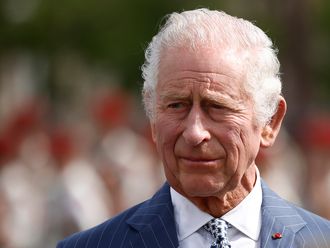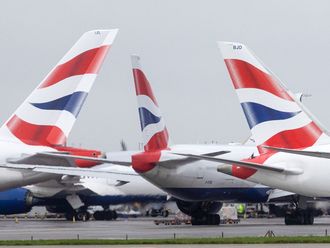LONDON: For the first time since 96 Liverpool fans died at an FA Cup semi-final match, their families may see public prosecutions against individuals and organisations over mistakes made 27 years ago.
Following the unlawful killing verdicts in the two-year-long inquest into the deaths, the Independent Police Complaints Commission, which has carried out an £80 million (Dh410 million) investigation with the help of a hand-picked group of detectives, has indicated that charges are now likely, whether for manslaughter, negligence or perverting the course of justice.
Police officers, South Yorkshire Police, the Football Association and Sheffield Wednesday FC could all find themselves in court. Stadium engineers, Sheffield City Council and the ambulance service could also face corporate charges. Here we examine the crucial new evidence given during the inquest that could lead to the first criminal trials.
And nothing but the truth...
Ever since the disastrous events of April 15, 1989, one man has been blamed above all others for the terrible loss of life: David Duckenfield, the former South Yorkshire chief superintendent who was the match commander that day.
It was his decision to open an exit gate to alleviate overcrowding outside turnstiles at Hillsborough Stadium that led to hundreds of Liverpool fans pouring onto the terraces at the Leppings Lane end, causing the crush that suffocated the victims.
The inquest jury has now decided he failed in his duty of care to the fans, and that his failure amounted to “gross negligence”, therefore the 96 dead were victims of unlawful killing.
Now aged 71, Duckenfield admitted that he had not been entirely honest when he gave evidence to a series of previous inquires and investigations, but that he had now decided to tell the “whole truth”.
Newly-promoted and inexperienced, he accepted he was “not the best man for the job” and that he “froze” as he tried to handle the crisis developing in front of him.
It had been a “serious mistake”, he said, to take over responsibility for the match just 15 days beforehand, and he signed off on a “hopeless” operational plan that put 177 fewer officers on duty than for previous semi-finals.
He had only “basic” knowledge of the stadium, did not know about police concerns over the “bottleneck” layout, which had caused crush injuries before, and had no training in monitoring terrace pens.
The cover up by police...
The inquest heard that a police cover up of the real cause of the tragedy began even as victims lay dying.
Duckenfield accepted that when the FA chief executive, Graham Kelly, came into the police control room to find out what was going in, he had lied about the cause of the crush, saying fans had gained unauthorised access to the stadium through an gate — one that he had ordered to be opened.
He said: “That was a terrible lie, in that everybody knew the truth. The fans knew the truth, that we’d opened the gates, the police officers knew we’d opened the gates.”
In the hours and days after the tragedy, there was evidence of South Yorkshire Police shifting the blame from its own officers to Liverpool fans, who were smeared as drunks trying to get in without tickets.
Former Detective Superintendent Graham McKay, who was the first senior investigating officer on the scene, ordered his officers not to make notes in their pocketbooks and instead to write up their recollections on plain pieces of paper.
He told the jury there was “nothing sinister” in his order and that he believed they needed a “separate document” to record their memories. The officers’ statements were sent to a solicitor acting for South Yorkshire Police, who suggested changes.
Assistant Chief Constable Stuart Anderson is alleged to have told his shift: “It was down to drunken, ticketless fans that caused the disaster and we should not be blaming ourselves for that.”
After the game the dead, including children, had their blood alcohol levels taken and pubs were visited by officers gathering statements.
A fatal oversight
The police operational order for the match was hopelessly inadequate, the inquest heard.
Chief Inspector David Beal, one of the officers who wrote the document, accepted there should have been “contingency” in the orders to cater for a build-up of fans outside the ground.
He said a tactic of police blocking off the tunnel leading into the central pens should also have been included in the order.
Beal added that if he was writing the orders again, he would have posted a dedicated group of officers there to do that.
The year before the disaster, Liverpool and Nottingham Forest had met at Hillsborough in a carbon copy of the FA Cup semi-final tie. On that occasion, fans were turned away from the central pens by police officers who were blocking the tunnel.
The unsafe terraces
Sheffield Wednesday FC, the club that owns Hillsborough, was accused of failing to ensure the safety of the terraces.
The club’s official capacity for the Leppings Lane terraces was 10,100, but stadium expert John Cutlack calculated the safe capacity to be just 7,725.
Seven of the 13 crush barriers in pens three and four, where the disaster unfolded, did not meet regulations, according to Cutlack, and they were so old that a 58-year-old newspaper was found rolled up inside one of the crush barriers after it collapsed.
Richard Chester, Sheffield Wednesday club secretary from 1984 to 1986, said he had secretly removed 250 Leppings Lane tickets from sale at two all-ticket matches in the 1984/85 season because he was worried about overcrowding.
He said: “I wanted a little bit of protection and a little bit of backup. You appreciate that if you have taken an area of terracing out that is not available, then logically you cannot have the same number of people. Quite clearly we did not want to be involved in a safety problem or a public disorder issue.”
There were also issues with turnstiles on the day of the match. Twelve turnstiles were closed, meaning 6,000 more fans had to get through the Leppings Lane turnstiles. More than 24,200 Liverpool fans were expected to enter the ground through 23 turnstiles, while 29,800 Nottingham Forest supporters were able to use 60 turnstiles at the opposite end of the stadium.












